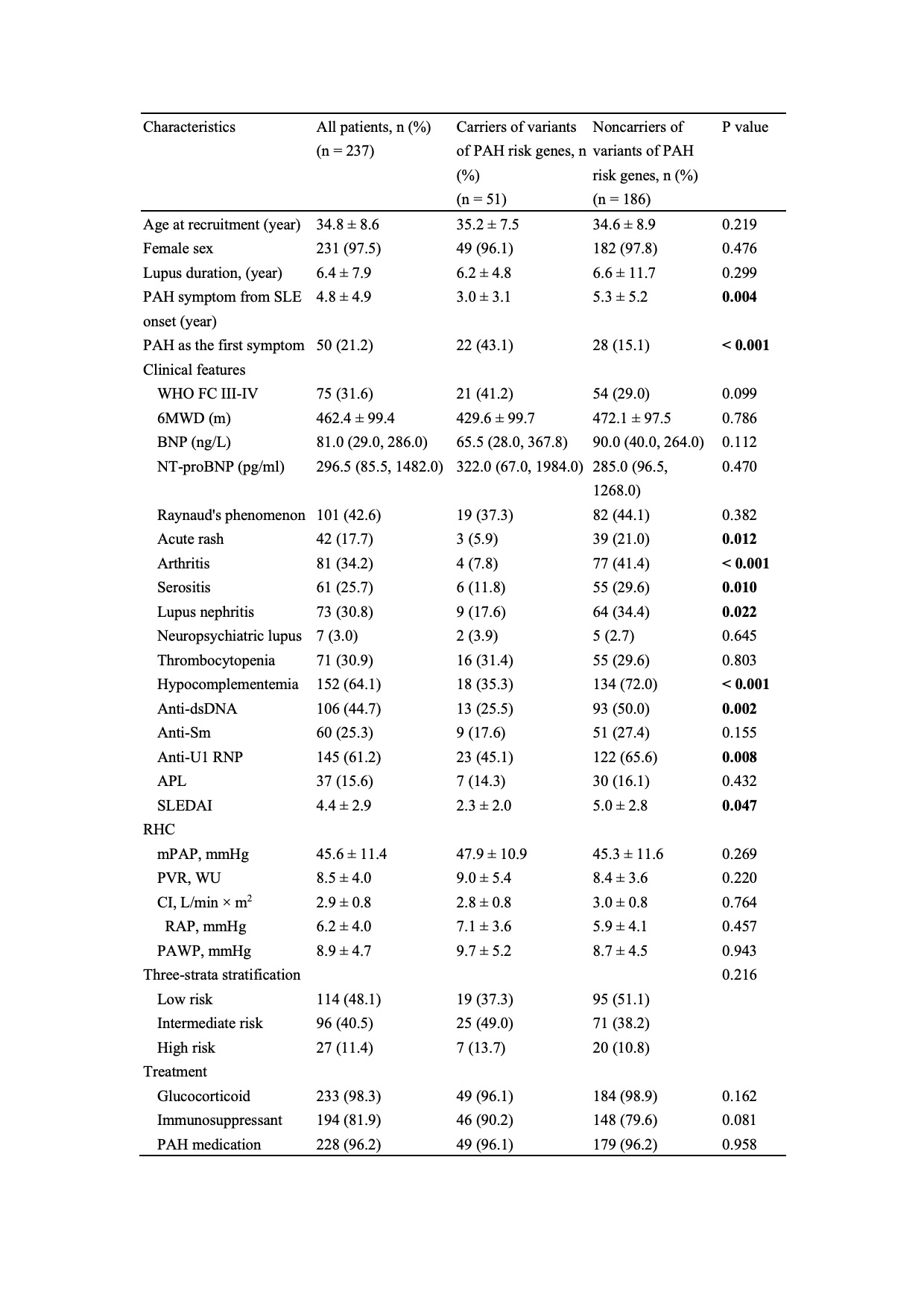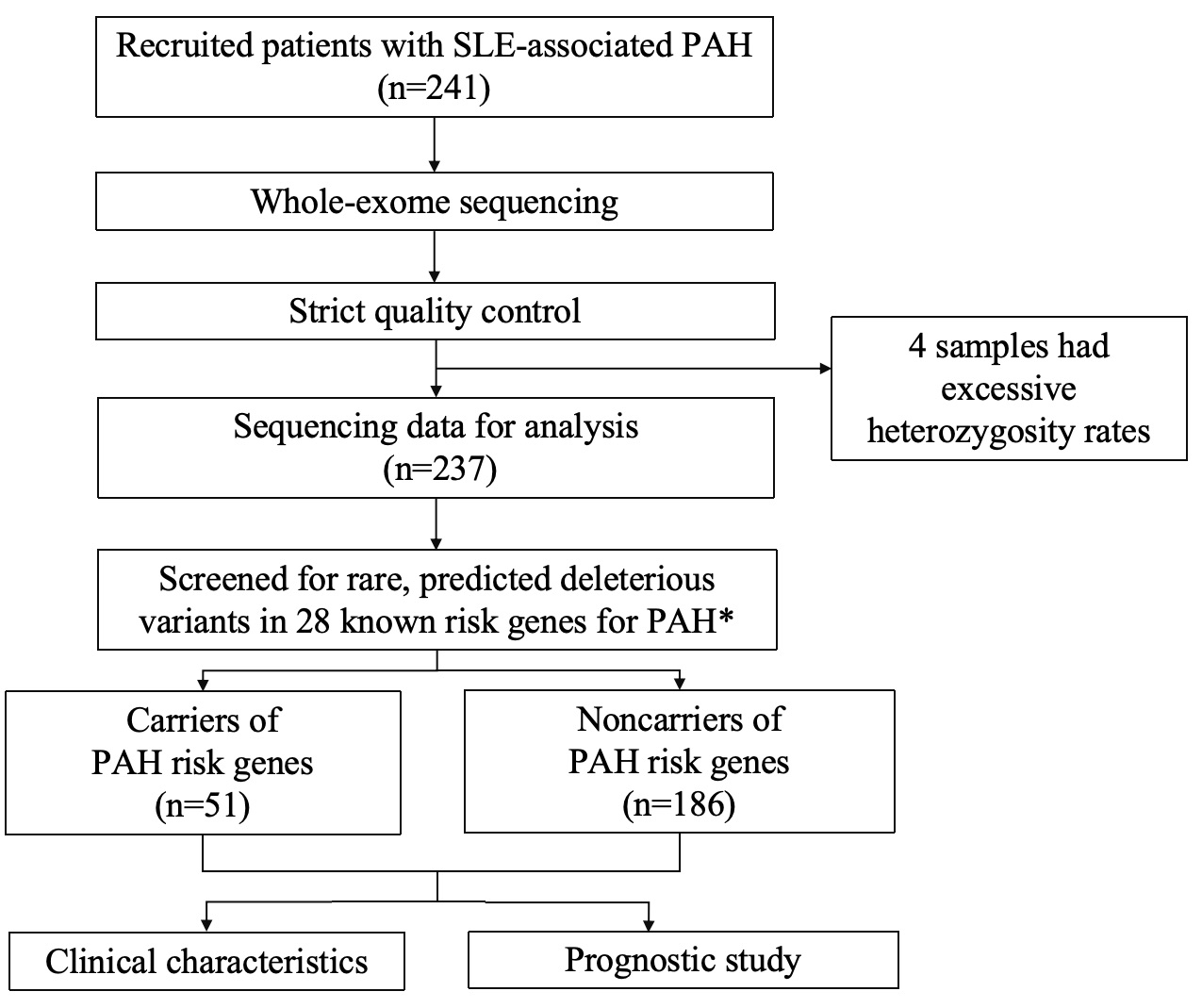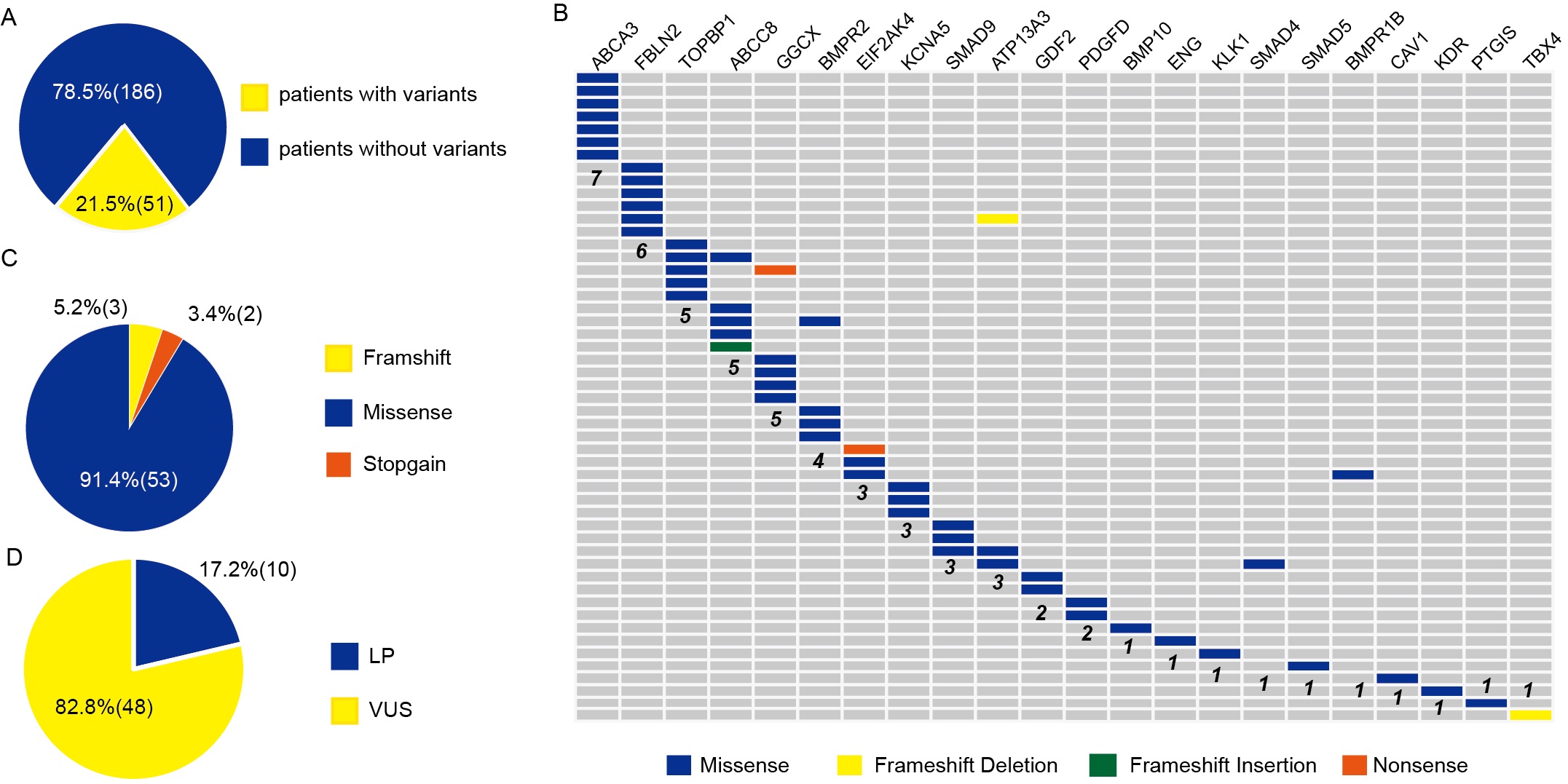Session Information
Date: Saturday, November 16, 2024
Title: Abstracts: SLE – Diagnosis, Manifestations, & Outcomes I: Omics
Session Type: Abstract Session
Session Time: 1:00PM-2:30PM
Background/Purpose: Systemic lupus erythematosus (SLE)-associated pulmonary arterial hypertension (PAH) displays significant clinical heterogeneity; nevertheless, the underlying mechanisms remain unclear. Presently, more than twenty risk genes have been identified to be closely linked to the pathogenesis and prognosis of idiopathic and familial PAH. However, the contribution of rare variants of PAH risk genes to SLE-associated PAH remains largely unknown. Systemic lupus erythematosus (SLE)-associated pulmonary arterial hypertension (PAH) displays significant clinical heterogeneity; nevertheless, the underlying mechanisms remain unclear. Presently, more than twenty risk genes have been identified to be closely linked to the pathogenesis and prognosis of idiopathic and familial PAH. However, the contribution of rare variants of PAH risk genes to SLE-associated PAH remains largely unknown.
Methods: Based on the Chinese SLE Treatment and Research Group-PAH cohort, 241 patients with SLE-associated PAH were recruited and screened for rare deleterious variants in 28 PAH risk genes by whole exome sequencing. Clinical features, hemodynamic characteristics and outcomes were compared between variant carriers and noncarriers.
Results: Fifty-one patients (21.5%) carried rare deleterious variants of PAH risk genes. Compared to noncarriers, carriers had a shorter PAH duration from SLE onset (3.0 ± 3.1 vs. 5.3 ± 5.2 years, P=0.004), a higher proportion of PAH as the onset symptom of SLE (43.1% vs. 15.1%, P< 0.001) and lower SLE disease activity. Carrying rare variants of PAH risk genes was identified as an independent prognostic factor of mortality (hazard ratio [HR]=3.13, 95% CI, 1.10-8.97; P=0.005) and of reaching a low-risk profile of PAH (HR=0.56, 95% CI 0.34-0.94, P=0.027).
Conclusion: We showed for the first time that rare variants of PAH risk genes associated with a distinct vasculopathy phenotype and worse outcomes in patients with SLE-associated PAH, highlighting the significant clinical value in molecular classification.
To cite this abstract in AMA style:
Qian J, Yang X, Ding Y, wang q, Zhao J, Liu W, Liu Y, Tian Z, Wang Y, Wang X, Li M, Zeng X. Rare Variants of PAH Risk Genes Associate with a Distinct Vasculopathy Phenotype and Worse Outcomes in Patients with Systemic Lupus Erythematosus-associated Pulmonary Arterial Hypertension [abstract]. Arthritis Rheumatol. 2024; 76 (suppl 9). https://acrabstracts.org/abstract/rare-variants-of-pah-risk-genes-associate-with-a-distinct-vasculopathy-phenotype-and-worse-outcomes-in-patients-with-systemic-lupus-erythematosus-associated-pulmonary-arterial-hypertension/. Accessed .« Back to ACR Convergence 2024
ACR Meeting Abstracts - https://acrabstracts.org/abstract/rare-variants-of-pah-risk-genes-associate-with-a-distinct-vasculopathy-phenotype-and-worse-outcomes-in-patients-with-systemic-lupus-erythematosus-associated-pulmonary-arterial-hypertension/



